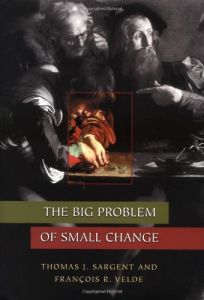Join getAbstract to access the summary!

Join getAbstract to access the summary!
Thomas J. Sargent and Francois R. Velde
The Big Problem of Small Change
Princeton UP, 2002
What's inside?
If you think small change is penny ante, check again. Coinage poses an old puzzle that's pivotal to the value of money.
Recommendation
Authors Thomas J. Sargent and Francois R. Velde offer a fascinating work of scholarship that studies the history of coinage in broad scope and depth. They dwell on a problem that is no longer a problem: the set value of coins. Internationally, consumers take it for granted that so many units of small change equal a larger unit of money. A U.S. shopper never wonders if 100 pennies could be worth more or less than a dollar. But during most of history, the value of small change was a vexing economic conundrum. The authors explore the evolution of the monetary system from Roman times, taking a circuitous and rambling path that touches on many subjects, from sieges to papal speculations. Regrettably, this book may be inaccessible to readers without a firm grounding in economic history and some comfort with higher math since the authors are scholars and assume that you are, too. Nonetheless, getAbstract.com recommends this sweeping book to anyone whose curiosity is piqued by this précis.
Summary
About the Authors
Thomas J. Sargent is Berkley Professor of Economics and Business at New York University and a senior fellow at the Hoover Institution. He is the author of The Conquest of American Inflation and other books. Francois R. Velde is a senior economist at the Federal Reserve Bank in Chicago and a lecturer in economics at the University of Chicago.

















Comment on this summary